Search

A dramatic thriller that tells the engaging and touching stories of immigrants and natives during the time leading up to the independence of Singapore. The protagonists were a part of history in the making; they become the pioneer generation who live to see beyond the prejudice and fear of racial hatred and ultimately face the challenge of nation building – a mirror reflecting the fragility of racial harmony in our world today.
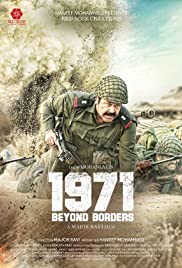
Set against the backdrop of 1971 Indo-Pak war, the movie is inspired by real incidents and the protagonists are inspired by Param Vir Chakra recipients. The movie shows what consequences of war are on the lives of soldiers on either side of the border.

Edda Chiemnyjewski, a freelance press photographer and single mother living in 1970s West Berlin, is confronted with the fact that “a cook has no time for affairs of state”. She also fails to find a market for the project she has been working on with her women′s photography group that seeks to document the city. While from today′s perspective the city, which becomes one of the film′s protagonists, looks like post-war Berlin, little has actually changed as regards the precarious existence of free-lancers. With a heavy dose of self-irony Helke Sander, who also plays the leading role, tells of a divided life in a divided city.

The Bride Who Has Returned From Hell (or Bride in Hell) is an adaption of The Mistress from Melynn, a 1960 novel by Victoria Holt. The story begins when a yacht is lost at sea. Then a telephone call between male protagonist Wang Yiming (Ke Junxiong) and his cousin Gao Fengjiao (Liu Qing) reveals that Wang’s wife has perished while eloping with a neighbor. After female protagonist Bai Ruimei (Jin Mei) learns that her older sister Ruiyun – Wang’s wife – has died, Ruimei changes her identity and applies for a job as a tutor to Wang’s daughter Shuyuan in a bid to solve the mysteries surrounding her sister’s death.

When Continuation War started in Summer 1941, German soldiers arrived to Oulu. With their charm they conquered women and town boys. Finnish boys communicated with them on many levels: had trades, worked as interpreters, rotated business, spied on German love adventures and fought with each other about the favor of soldiers. In autumn 1944, the war was ending. Germans left Oulu by leaving behind fragile relationships, bastard kids and unfinished businesses. The most shocking of all was the faith of young Jake…

Faruk, who is over 90 years old, increasingly becomes the protagonist in the film his daughter is making about the impending demolition of his block of flats in Istanbul. A story about gentrification and a complex father-daughter relationship.

Based on the novel of the same name by Mikhail Sholokhov, about the fate of people broken by the First World War, the October Revolution of 1917 and the Civil War in Russia (1917-1922), about the collapse of the foundations and ideals of the Don Cossacks of Russia at the beginning of the XX century, about the personal tragedy of the protagonist — Grigoriy Melekhov.

The action of the film begins in the 1970s – even then, the young protagonist knows that adrenaline tastes better than powdered milk. Over time, he also discovers a desire for money, power, and being above the law. A transformation begins, and his gangster talent blossoms. Together with a friend, they build their own army.

This is the gripping and emotionally charged story of Tyke, a circus elephant that went on a rampage in Honolulu in 1994, killed her trainer in front of thousands of spectators and died in a hail of gunfire. Her break for freedom – filmed from start to tragic end – traumatised a city and ignited a global battle over the use of animals in the entertainment industry. Looking at what made Tyke snap, the film goes back to meet the people who knew her and were affected by her death – former trainers and handlers, circus industry insiders, witnesses to her rampage, and animal rights activists for whom Tyke became a global rallying cry. Like the classic animal rebellion film King Kong, Tyke is the central protagonist in a tragic but redemptive drama that combines trauma, outrage, insight and compassion. Ultimately, this moving documentary raises fundamental questions about our deep and mysterious connection to other species.
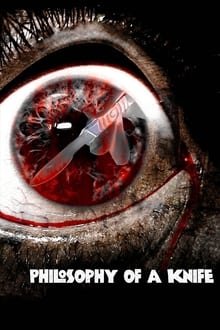
The true history of Japanese Unit 731, from its beginnings in the 1930s to its demise in 1945, and the subsequent trials in Khabarovsk, USSR, of many of the Japanese doctors from Unit 731. The facts are told, and previously unknown evidence is revealed by an eyewitness to these events, former doctor and military translator, Anatoly Protasov.

Follow an adventurous family on the time-travelling journey of a lifetime as they take on iconic trends in food, design and domestic gadgetry, beginning in the 1940s. Guided by host Carlo Rota, each week the Campus family from southern Ontario will live through a new decade of Canadian food and domestic trends.
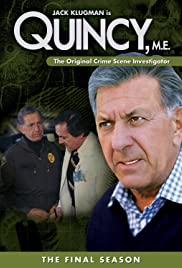
Quincy, M.E. is an American television series from Universal Studios that aired from October 3, 1976, to September 5, 1983, on NBC. It stars Jack Klugman in the title role, a Los Angeles County medical examiner.
Inspired by the book Where Death Delights by Marshall Houts, a former FBI agent, the show also resembled the earlier Canadian television series Wojeck, broadcast by CBC Television. John Vernon, who played the Wojeck title role, later guest starred in the third-season episode “Requiem For The Living”. Quincy’s character is loosely modelled on Los Angeles’ “Coroner to the Stars” Thomas Noguchi.
The first half of the first season of Quincy was broadcast as 90-minute telefilms as part of the NBC Sunday Mystery Movie rotation in the fall of 1976 alongside Columbo, McCloud, and McMillan. The series proved popular enough that midway through the 1976–1977 season, Quincy was spun off into its own weekly one-hour series. The Mystery Movie format was discontinued in the spring of 1977.
In 1978, writers Tony Lawrence and Lou Shaw received an Edgar Award from the Mystery Writers of America for the second-season episode “…The Thighbone’s Connected to the Knee Bone…”. Many of the episodes used the same actors for different roles in various episodes. For example, an actor who plays a crooked Navy captain also plays a ballistics expert in several of the later episodes. Using a small “pool” of actors was a common production trait of many Glen A. Larson TV programs. Before becoming a regular cast member as Quincy’s girlfriend-wife Dr. Emily Hanover in the 1982-1983 season, Anita Gillette had portrayed Quincy’s deceased first wife Helen Quincy in a flashback in a 1979 episode “Promises to Keep”.
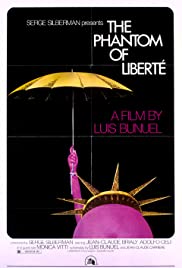
This Surrealist film, with a title referencing the Communist Manifesto, strings together short incidents based on the life of director Luis Buñuel. Presented as chance encounters, these loosely related, intersecting situations, all without a consistent protagonist, reach from the 19th century to the 1970s. Touching briefly on subjects such as execution, pedophilia, incest, and sex, the film features an array of characters, including a sick father and incompetent police officers.
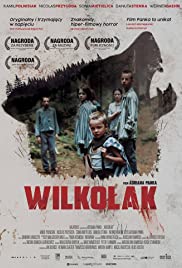
Summer of 1945. A temporary orphanage is established in an abandoned palace surrounded by forests for the eight children liberated from the Gross-Rosen camp. Hanka, also a former inmate, becomes their guardian. After the atrocities of the camp, the protagonists slowly begin to regain what is left of their childhood but the horror returns quickly. Camp Alsatians roam the forests around. Released by the SS earlier on, they have gone feral and are starving. Looking for food they besiege the palace. The children are terrified and their camp survival instinct is triggered.
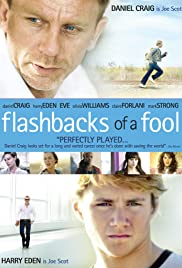
An aging Hollywood star, Joe Scott, lives a life of narcissistic hedonism, observed by his laconic personal assistant, Ophelia. The death of his childhood best friend, Boots, takes our protagonist, and the movie, into an extended flashback to a sea-side town in 1970’s Britain.
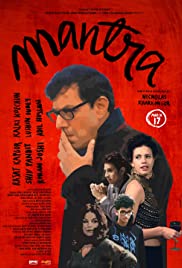
In 1991, the Government of India opened up the economy and unleashed the forces of globalization, forever changing the landscape of the country. A dozen years later, India was celebrating its emergence as a global economic super power. Set in 2004, in the midst of a nationwide ‘India Shining’ campaign, the film Mantra tells the intimate story of a family and its travails, and through it, the story of the New India. The protagonist of the film is Kapil Kapoor, the founder of an iconic Indian snack brand in the ‘License Raj’ old India. But today – in 2004 – he is fighting a losing battle against a multinational that has taken over the market. But it is not just his company that Kapil is desperately trying to save; it is also his own wife and children who are battling their own crises.
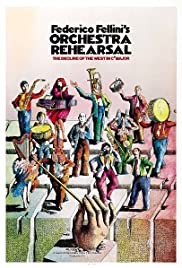
Orchestra Rehearsal (Italian: Prova d’orchestra) is a 1978 Italian film directed by Federico Fellini. It follows an Italian orchestra as the members go on strike against the conductor. The film was shown out of competition at the 1979 Cannes Film Festival. Considered by some to be underrated Orchestra Rehearsal was the last collaboration between composer Nino Rota and Fellini, due to Rota’s death in 1979.
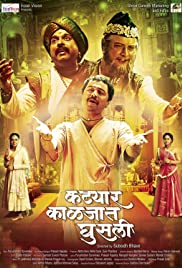
Katyar Kaljat Ghusli is a 2015 Marathi film based on a play by the same name. Directed by Subodh Bhave, the film stars Sachin Pilgaonkar, Shankar Mahadevan, and Subodh Bhave in lead roles. The film marks the acting debut for Mahadevan and directorial debut for Bhave. The original play premiered in 1967 in Mumbai, where Hindustani classical vocalist Vasantrao Deshpande played one of the protagonists. In 2010, the play was relaunched with protagonists essayed by Rahul Deshpande, grandson of Vasantrao Deshpande and singer Mahesh Kale. The film’s music is composed by Shankar–Ehsaan–Loy, and retained some of the songs from the original play composed by Jitendra Abhisheki.
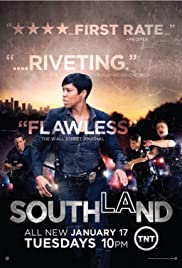
Since premiering in 2009, Southland has redefined the police drama with its raw, authentic look at the lives and work of Los Angeles detectives and beat cops. The show centers on four main characters: Officer John Cooper (Cudlitz), a seasoned cop who will have to prove himself again after recovering from surgery; Officer Ben Sherman (McKenzie), who still has much to learn after recently completing his training rotation; Detective Lydia Adams (King), whose unending caseload hits closer to home; and Sammy Bryant (Hatosy), a former detective who decided to go back to being a uniform cop after the traumatic death of his partner.
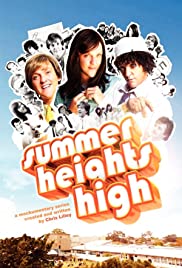
Summer Heights High is an Australian television mockumentary series written by and starring Chris Lilley. It is a parody of high-school life epitomised by its three protagonists: effeminate and megalomaniacal “Director of Performing Arts” Mr G; self-absorbed, privileged teenager Ja’mie King; and disobedient, vulgar Tongan student Jonah Takalua. All played by Lilley, the characters never interact. It lampoons Australian high school life and many aspects of the human condition and is filmed in a documentary style, with non-actors playing supporting characters.
Following a similar format to Lilley’s previous series, We Can Be Heroes: Finding The Australian of the Year, Lilley plays multiple characters in the show. Filmed in Melbourne at Brighton Secondary College, the series premiered on 5 September 2007 at 9:30 pm on ABC TV and continued for eight weekly episodes until 24 October 2007. Each episode was also released as a weekly podcast directly after its screening via both the official website and through any RSS podcast client in either WMV or MPEG-4.
Summer Heights High was a massive ratings success for the Australian Broadcasting Corporation, and was met with mostly positive critical reaction. In 2008, the series won a Logie Award for Most Popular Light Entertainment/Comedy Program.